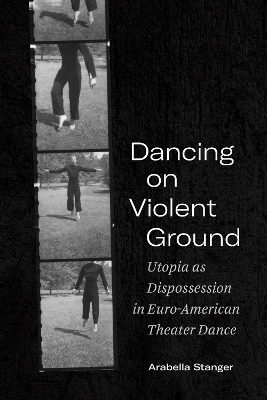
Dancing on Violent Ground
Utopia as Dispossession in Euro-American Theater Dance
Seiten
2021
Northwestern University Press (Verlag)
978-0-8101-4408-8 (ISBN)
Northwestern University Press (Verlag)
978-0-8101-4408-8 (ISBN)
The politics of theatre dance is commonly theorised in relation to bodily freedom, resistance, agitation, or repair. This book questions those utopian imaginaries, arguing that the visions and sensations of canonical Euro-American choreographies carry hidden forms of racial violence.
The politics of theater dance is commonly theorized in relation to bodily freedom, resistance, agitation, or repair. This book questions those utopian imaginaries, arguing that the visions and sensations of canonical Euro-American choreographies carry hidden forms of racial violence, not in the sense of the physical or psychological traumas arising in the practice of these arts, but through the histories of social domination that materially underwrite them.
Developing a new theory of choreographic space, Arabella Stanger shows how embodied forms of hope promised in ballet and progressive dance modernisms conceal and depend on spatial operations of imperial, colonial, and racial subjection. Stanger unearths dance’s violent ground by interrogating the expansionist fantasies of Marius Petipa’s imperial ballet, settler colonial and corporate land practices in the modern dance of Martha Graham and George Balanchine, reactionary discourses of the human in Rudolf von Laban’s and Oskar Schlemmer’s movement geometries; Merce Cunningham’s experimentalism as a white settler fantasy of the land of the free, and the imperial amnesia of Boris Charmatz’s interventions into metropolitan museums. Drawing on materialist thought, critical race theory, and indigenous studies, Stanger ultimately advocates for dance studies to adopt a position of “critical negativity,” an analytical attitude attuned to how dance’s exuberant modeling of certain forms of life might provide cover for life negating practices. Bold in its arguments and rigorous in its critique, Dancing on Violent Ground asks how performance scholars can develop a practice of thinking hopefully, without expunging history from their site of analysis.
The politics of theater dance is commonly theorized in relation to bodily freedom, resistance, agitation, or repair. This book questions those utopian imaginaries, arguing that the visions and sensations of canonical Euro-American choreographies carry hidden forms of racial violence, not in the sense of the physical or psychological traumas arising in the practice of these arts, but through the histories of social domination that materially underwrite them.
Developing a new theory of choreographic space, Arabella Stanger shows how embodied forms of hope promised in ballet and progressive dance modernisms conceal and depend on spatial operations of imperial, colonial, and racial subjection. Stanger unearths dance’s violent ground by interrogating the expansionist fantasies of Marius Petipa’s imperial ballet, settler colonial and corporate land practices in the modern dance of Martha Graham and George Balanchine, reactionary discourses of the human in Rudolf von Laban’s and Oskar Schlemmer’s movement geometries; Merce Cunningham’s experimentalism as a white settler fantasy of the land of the free, and the imperial amnesia of Boris Charmatz’s interventions into metropolitan museums. Drawing on materialist thought, critical race theory, and indigenous studies, Stanger ultimately advocates for dance studies to adopt a position of “critical negativity,” an analytical attitude attuned to how dance’s exuberant modeling of certain forms of life might provide cover for life negating practices. Bold in its arguments and rigorous in its critique, Dancing on Violent Ground asks how performance scholars can develop a practice of thinking hopefully, without expunging history from their site of analysis.
Arabella Stanger is Lecturer in Drama: Theatre and Performance at the University of Sussex.
Acknowledgements
Introduction: Unearthing Choreographic Violence
1. 'This Monument Must Be Eternal': the Sleeping Beauty's Imperial Imaginaries
2. Frontier to Skyscraper: Graham, Balanchine, and Land as Acquisition
3. Dancing Nature, Dancing Artifice: Laban, Schlemmer, and Reactionary Living Diagrams
4. Choreographing White Ideality: Cunningham and Black Mountain College
Coda
Notes
Index
| Erscheinungsdatum | 01.09.2021 |
|---|---|
| Reihe/Serie | Performance Works |
| Zusatzinfo | 12 b&w images |
| Verlagsort | Evanston |
| Sprache | englisch |
| Maße | 152 x 229 mm |
| Gewicht | 332 g |
| Themenwelt | Kunst / Musik / Theater ► Theater / Ballett |
| Sachbuch/Ratgeber ► Sport ► Tanzen / Tanzsport | |
| ISBN-10 | 0-8101-4408-5 / 0810144085 |
| ISBN-13 | 978-0-8101-4408-8 / 9780810144088 |
| Zustand | Neuware |
| Haben Sie eine Frage zum Produkt? |
Mehr entdecken
aus dem Bereich
aus dem Bereich


